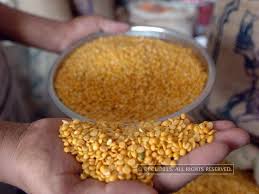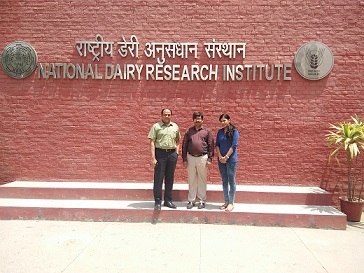An international team of scientists led by Indian researchers has re-sequenced the genomes of 292 pigeon pea varieties - arhar or tur dal - from around the world to discover new traits that may be exploited in future to develop better varieties of pulses. The team has also found genetic evidence to demonstrate that the crop was domesticated in Madhya Pradesh almost 3,500 years ago.
In addition, they have traced genetic links to show how the crop migrated from India to some of the African countries, which are now among the principal suppliers of tur dal in the expanding Indian market. But the most important take away from the sequenced genomes are identification of agronomically important traits. The scientists have identified the genes responsible for sterility mosaic disease and fusarium wilt the two commonest diseases adversely affecting the pigeon pea yield.
They have also spotted the genes behind the plant's photo-period 'how a plant responds to the light and dark periods ' which is critical to the plant growth. The findings have been published in latest issue of journal Nature Genetics.
These useful traits will help accelerate pigeon pea breeding and reduce the time to develop superior varieties from 8-10 years that are currently required, said Rajeev K Varshney, project director at the Hyderabad-based International Crop Research Institute for Semi-Arid Tropic (ICRISAT), who led the team. We should be able to develop the new varieties within the next 3-4 years, using the molecular breeding technique.

"India needs such critical discoveries that do not just add to scientific knowledge but also enhance production by delivering photo-insensitive lines and increase productivity by delivering high yielding varieties," said union agriculture secretary S K Pattanayak.
OThe pigeon-pea yield has remained stagnant over the last six decades, with limited genetic diversity and genome information, which is required for the development of superior varieties. With an average yield of 700-800 kg per hectare, India currently produces around 3.5-4 million tonnes of pigeon-pea, which is less than sufficient.
India's total requirement of pulses is around 25 million tonnes, whereas the internal production is about 19-20 million tonnes. The balance comes mainly through imports from African countries. 'India needs such critical discoveries that do not just add to scientific knowledge but also enhance production by delivering photo-insensitive lines and increase productivity by delivering high yielding varieties,' said union agriculture secretary S K Pattanayak.
Six years ago, another ICRISAT-led team first sequenced the pigeon-pea genome, which gave the first set of clues to the researchers. Sequencing 292 varieties of the crop from 23 countries and comparing their genome data helped scientists find out specific genes that can be manipulated through molecular breeding.
Besides ICRISAT, other institutes that participated in the study are University of Western Australia, Crawley; Professor Jayshankar Telangana State Agricultural University, Hyderabad; University of Agricultural Sciences, Kalaburgi; University of California, Davis; Florida International University, Miami and Visva-Bharati, Shantiniketan. Two commercial entities, Shenzhen Millennium Genomics, Inc, Shenzhen and MACROGEN Inc, Seoul were also part of the research efforts. (India Science Wire)



